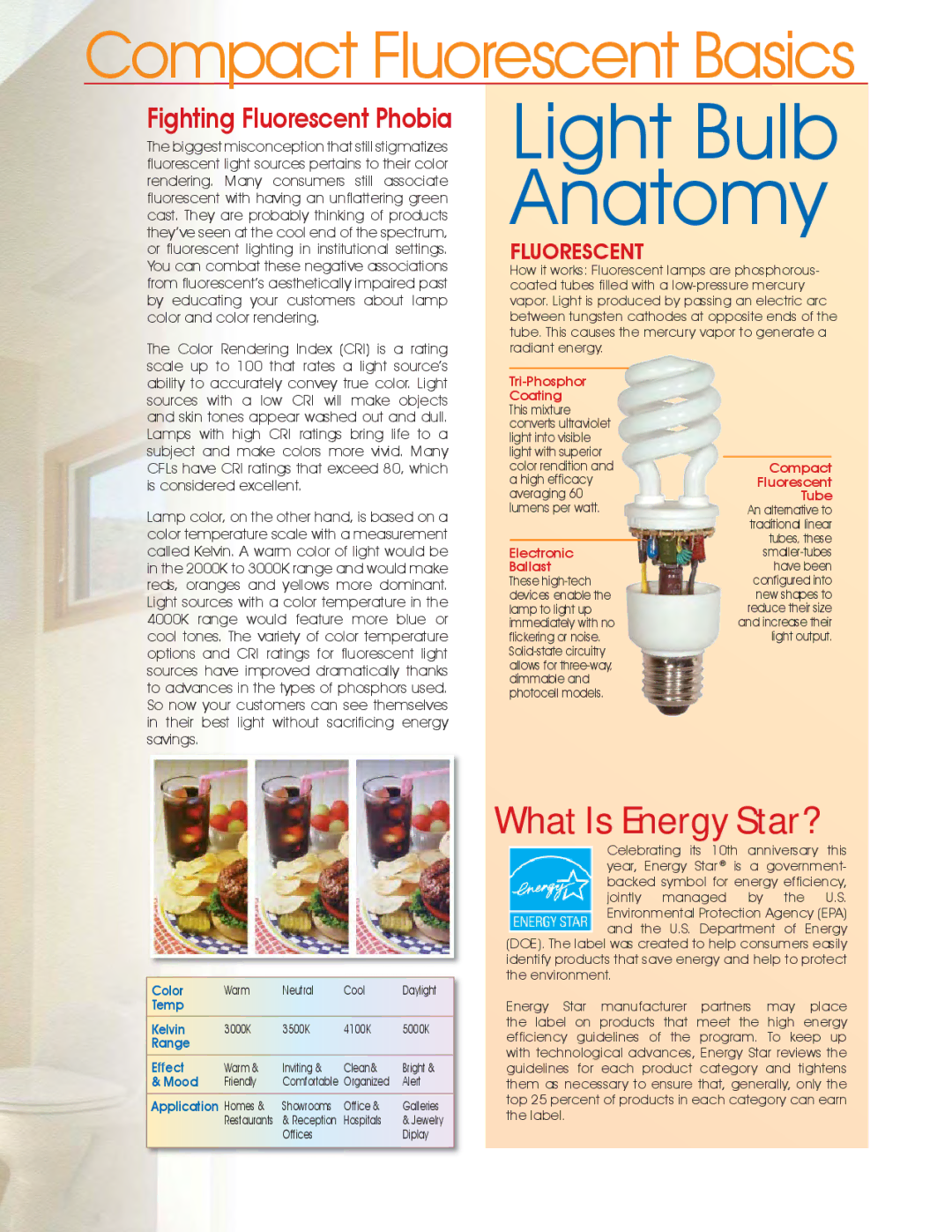Compact Fluorescent Lamps specifications
Satco Products is a prominent name in the lighting industry, known for their innovative approach to energy-efficient lighting solutions. Among their extensive range of offerings, Compact Fluorescent Lamps (CFLs) stand out as an environmentally friendly alternative to traditional incandescent bulbs. The unique features and technologies integrated into Satco’s CFLs make them a popular choice for both residential and commercial applications.One of the main highlights of Satco’s CFLs is their energy efficiency. Consuming up to 75% less energy than traditional incandescent bulbs, these lamps significantly reduce electricity costs. This efficiency is crucial in today’s eco-conscious environment, where minimizing carbon footprints has become a priority. With an average lifespan of 10,000 hours or more, CFLs are also remarkably durable, reducing the frequency of replacements and contributing to waste reduction.
Satco’s CFLs utilize advanced electronic ballast technology, which enhances performance and reduces flickering and humming, common issues in older fluorescent technologies. This electronic ballast allows the bulbs to reach full brightness almost instantly, making them user-friendly and practical for a wide range of lighting applications.
In addition to their efficiency, Satco Products ensures that their CFLs are available in various color temperatures, catering to different lighting needs. Whether for a warm, cozy ambiance in living spaces or bright, functional light in work areas, users can choose from soft white, cool white, and daylight options. These variances help create the desired atmosphere while ensuring sufficient illumination.
Additionally, Satco incorporates features like compact designs and screw-in bases that fit standard fixtures, making installation simple and hassle-free. Many of their CFL models offer dimmable options, providing even more flexibility for users looking to modify lighting levels based on their preferences.
Safety is also a top priority for Satco. Their CFLs are manufactured with high-quality materials, ensuring longevity and reliable performance. Many of their products are compliant with international safety standards, giving consumers peace of mind.
In conclusion, Satco Products' Compact Fluorescent Lamps exemplify the blend of efficiency, technology, and adaptability in modern lighting solutions. With their energy-saving capabilities, extended lifespans, and commitment to safety, Satco CFLs are an excellent choice for anyone looking to enhance their light quality while being mindful of energy consumption.

